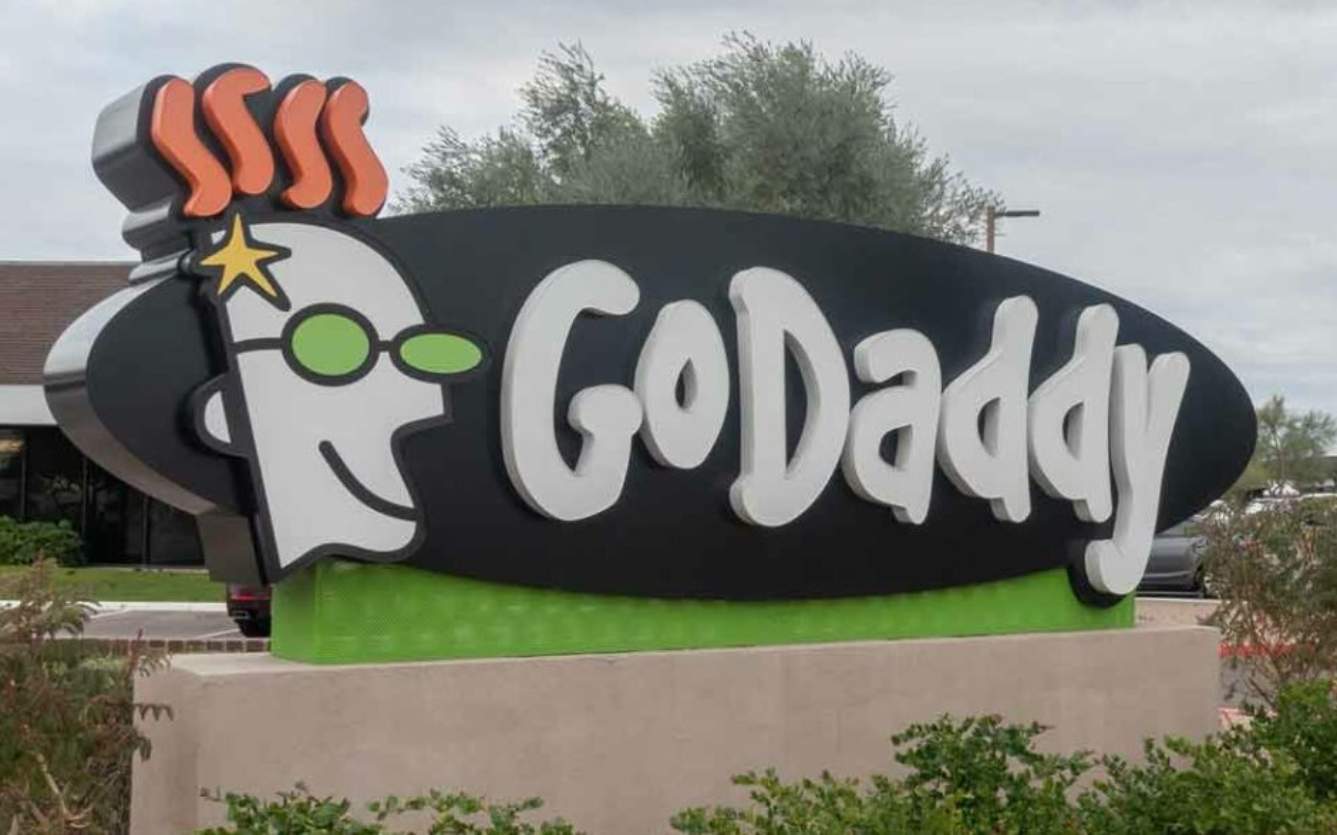The speed and efficiency with which domain registrars and hosting services respond to issues like website abuse and copyright infringement are critical.
Unfortunately, GoDaddy, one of the largest and most well-known domain registrars and hosting providers, continues to demonstrate a troubling pattern of inefficiency in addressing concerns.
For many businesses, time is money, and when their intellectual property or reputation is at stake, swift action is not just appreciated—it’s expected.
Yet, reports from frustrated users suggest that GoDaddy’s response time to serious issues, such as website abuse and copyright violations, can often stretch into weeks, if not longer.
The lack of urgency not only harms the affected businesses but also contributes to a broader sense of frustration and a lack of accountability within the industry.
When users attempt to report these issues, they are often met with a cumbersome, long-winded reporting process. The portals provided by GoDaddy for reporting website abuse and copyright infringement are not only confusing but seem intentionally designed to discourage reporting.
Multiple pages of forms and outdated (no longer in use) contact details make it difficult for users to even get started. Instead of providing a simple, streamlined way for businesses to flag issues.
GoDaddy’s abuse reproting mediums feel more like a maze, with little to no feedback or acknowledgement from the company’s end once a report is submitted.
The result is a broken system that leaves business owners feeling helpless. When websites are used to host malicious content, steal intellectual property, or infringe on copyrights, the inability to quickly resolve these problems can lead to severe financial and reputational damage.
Yet, GoDaddy’s slow response times and inefficient reporting systems seem to ignore the urgency of these issues, making the situation worse rather than better.
While the company claims to prioritise customer service and security, their track record on these fronts leaves much to be desired. For example, many users report waiting for weeks before receiving any acknowledgment or updates about their reports.
In some cases, reports are seemingly ignored altogether, leaving businesses to fend for themselves or contact expensive legal representation in the face of ongoing harm.
GoDaddy’s failure to address these concerns is not just a matter of poor customer service, but one of accountability.
It’s now crucial for companies that hold such an influential position in the internet ecosystem to take ownership of their role in preventing online abuse and intellectual property theft.
However, as it stands, GoDaddy’s inefficient reporting system and lackluster response times are a glaring indication that the company is not doing enough to protect its users, their businesses, or the integrity of the internet as a whole.
In a troubling case of domain abuse, one website owner faced a three-week battle with GoDaddy after discovering that an entire set of articles from their site had been copied verbatim by a customer hosted on GoDaddy’s platform.
Despite repeated attempts to have the stolen content removed and the offending user suspended, the website owner found themselves locked in a frustrating and unresponsive process, with GoDaddy offering little in the way of resolution.
The stolen content, which represented months of hard work and original research, was immediately replicated without consent by a GoDaddy-hosted website.
The original content creator wasted no time reporting the issue to GoDaddy, expecting swift action in line with the company’s supposed commitment to combatting website abuse.
Unfortunately, what followed was a prolonged and ineffective struggle that left the website owner feeling powerless.
Initially, the website owner followed the proper reporting channels provided by GoDaddy, submitting a detailed request for the stolen content to be removed and the user’s hosting account to be suspended.
However, GoDaddy’s response was slow, with no immediate acknowledgment or clear action. As the days turned into weeks, the original website owner found themselves caught in a cycle of back-and-forth communication, with little meaningful progress being made.
Despite providing clear evidence of the stolen content and repeatedly following up, GoDaddy did not act to remove the copied articles or suspend the offending user. It became increasingly apparent that GoDaddy’s reporting system was either ineffective or designed to make it difficult for users to escalate issues.
Each inquiry seemed to be met with generic responses or promises of future action, but no concrete steps were taken to resolve the issue.
By the time GoDaddy finally took any action—three weeks later—the damage had already been done. The stolen articles had been widely shared and indexed by search engines, resulting in significant harm to the original website’s SEO rankings and credibility.
What should have been a simple case of content theft turned into a much larger problem, thanks to GoDaddy’s slow and inadequate response.
In the end, the website owner’s frustration wasn’t just about the stolen content—it was about GoDaddy’s inability or unwillingness to step in and take meaningful action in a timely manner.
Rising Role in Domain Registration Abuse: A Growing Concern for Compliance
GoDaddy appears to be a leading registrar for individuals attempting to register domains with incorrect WHOIS information or in violation of country-specific regulations—such as the .com.au domain extension, which is strictly reserved for Australian businesses or residents.
The .com.au extension is governed by strict policies that require registrants to be Australian businesses or residents. These policies are designed to ensure that only those with a legitimate connection to Australia can register these domains.
Yet, GoDaddy’s platform seems to make it alarmingly easy for individuals outside of Australia to bypass these regulations, allowing them to register .com.au domains without any verification or checks on their eligibility.
The misuse of the WHOIS system is a well-known issue in the domain registration world. WHOIS data is supposed to provide accurate contact details for domain owners, ensuring accountability and transparency.
However, GoDaddy has become a top choice for those who intentionally provide false, incomplete, or misleading information during the registration process.
The manipulation undermines the integrity of the domain registration system and creates a host of problems for both legitimate businesses and the broader internet community.
Here’s More – GoDaddy’s Domain Appraisal Tool: A Major Misleading Resource
If you’ve ever used GoDaddy’s domain appraisal tool, you may have been shocked—and not in a good way—by its wildly inaccurate assessments.
In fact, it’s becoming more and more evident that GoDaddy’s domain appraisal tool is not only off the mark, but it actively undervalues domains, leaving website owners, investors, and businesses misinformed about the true worth of their digital assets.
Take the case of Tech Business News, for example. According to GoDaddy’s appraisal tool, the well-established domain—rich with potential, brand recognition, and marketability—was valued at a mere $314 USD.
That’s right, just $314. But anyone with a basic understanding of the current domain market, niches and values would know this valuation is laughable at best.

In reality, with more accurate and sophisticated reporting tools, including manual reviews and past offers Tech Business News is worth closer to $35,000 USD, if not more, in today’s competitive market.
So, how did GoDaddy get it so wrong? Is it sheer incompetence, or is it part of a strategy to devalue domains in order to make them seem less valuable and, therefore, easier for GoDaddy to acquire or sell off?
This issue isn’t just a matter of a random error or a one-off mistake—numerous users have reported similar issues with GoDaddy’s appraisal tool, finding their domains consistently undervalued.
And this trend of undervaluation could be doing real harm to domain owners. For potential buyers or investors relying on GoDaddy’s appraisal tool, these inaccuracies paint a distorted picture of the domain market, leading to poor decisions and missed opportunities.
Moreover, the disparity between GoDaddy’s appraisals and the actual market value of domains like Tech Business News serves to erode confidence in the company’s ability to offer any real insight into domain investments
Conclusion: GoDaddy’s Inefficiency in Handling Website Abuse and Copyright Violation
GoDaddy’s failure to effectively manage website abuse and copyright violations is a growing concern for businesses and content creators relying on its services.
The company’s sluggish response times, convoluted reporting systems, and lack of accountability not only leave users vulnerable to ongoing harm but also undermine the integrity of the broader internet ecosystem.
When incidents of intellectual property theft or malicious activity are not swiftly addressed, the resulting damage—whether in lost revenue, damaged reputations, or compromised security—becomes more than just an inconvenience; it’s a serious liability.
For a company of GoDaddy’s size and influence, a more efficient, transparent, and user-focused approach is not just necessary; it’s long overdue. Until GoDaddy takes decisive action businesses and individuals will continue to bear the brunt of its inaction.







